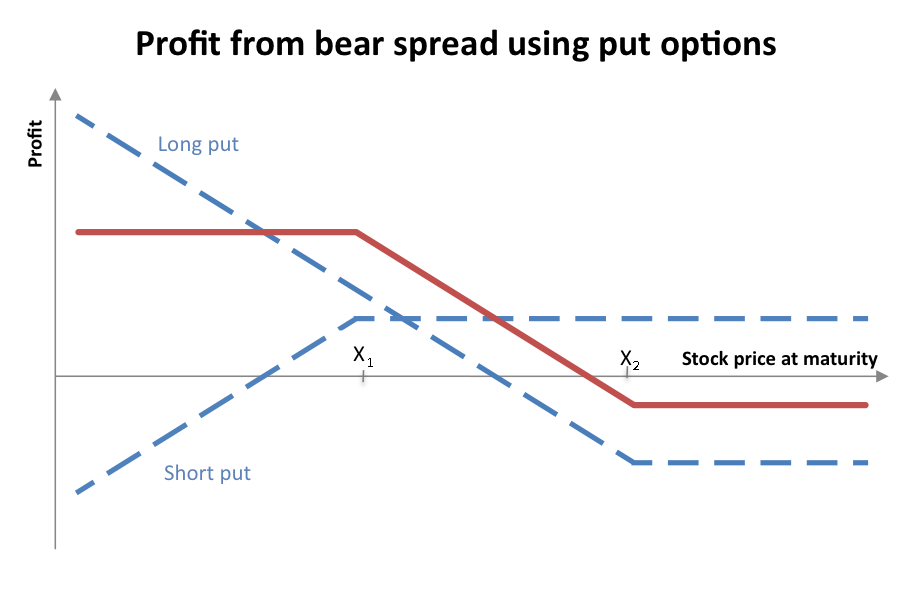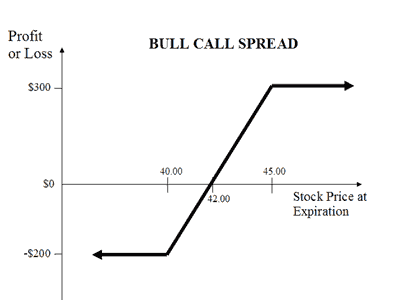Stock Option Spreads
Post on: 16 Март, 2015 No Comment

Ron Jackson, Publisher
Option Spreads: A Favorite Technique of the Pros
by Ron Jackson, Publisher
Credit spreads are one of the most consistently profitable of all option strategies. The pros use them all of the time simply because they make almost all of the time.
In fact in one of my talks with Ken Trester, Managing Editor, he told me that he had 21 spreads positions open.
And why not over the years spreads have made money for us 88% of the time and the profit is in the 50% to 100% range.
Now I am not going to lie to you spreads are harder trades to understand than simply buying a call or a put option.
They do take some experience and a little learning but as the old saying goes Youll never get to second base if you dont take your foot off first.
But look its not rocket science. you can do it.
We strongly believe in selling options to generate additional market profits — BUT — writing (selling) put options is riskier than buying options. And while we love profits, we hate risk even more.
So here is how we lower risk and still generate income.
This is Our Favorite Way of Making Money — It Should Be Yours, Too!
Im not a man given to exaggeration, so when I write that this may very well be the most important piece of information youll receive from me this year, you can bet I mean it.
Credit option spreads are my favorite money-making tactic. Why? Because credit spreads make money more than 80% of the time, yielding 50% to 100% profits.
Thats a remarkable return, and I want you to be involved in it. Buying calls and puts are great plays, too, and you need to use that tool — but you should also use credit spreads to ring the cash register, time and time again.
This special report gives you all you need to know to trade credit spreads.
The best thing about stock options is that you can use them to profit in any market — up, down or flat. And, almost as good as that, is that you have numerous ways with which to use them.
Most traders know the basics of stock options.
1. You buy an option
2. Hopefully, the option quickly increases in value
3. You sell the option and pocket your profit.
You may not be familiar with credit spreads — but one is usually recommended in the Friday issue of The Complete Option Report (al ong with our valuable debit spread recommendations).
Investor Jiu-Jitsu
The best thing about stock options is that you can use them to profit in any market — up, down or flat. And almost as good as that, is that you have numerous ways with which to use them.
Most traders know the basics of stock options. You buy an option, and if all goes right the option quickly increases in value, at which time you sell the option and pocket your profit.
You may not be familiar with credit spreads — Kens usual recommendation in the Friday issue of The Complete Option Report It is his favorite trading tactic.
I like to call this tactic Investor Jiu-jitsu. Heres why. Jiu-jitsu is an Oriental form of combat. The primary tactic is to use your opponents strength against him and, at the same time, find a weak spot that is unprotected.
Thats what credit spreads are all about — using the markets momentum against itself and piling on profits, month after month. Credit spreads are about the individual trader — like you — taking money that the big guys arent protecting.
Too Good To Be True? Not At All
We have profited with credit spreads more than 88% of the time over the years. How?
A credit spread profits when an option expires worthless. And many more options expire worthless than pay off. A credit spread simply takes an options negative and turns it into a positive.
So why are credit spreads relative unknowns?
Primarily because traders who use them arent the type who stand up and scream, Look at the big profits I just made! They prefer to operate in relative obscurity, under the radar, going about their business of steadily making money.
The Mechanics — How You Can Do It
All investing involves one simple premise — you sell something for more than you bought it. Credit spreads are no different. The premise of buy low and sell high remains.
With a credit spread, all you are doing is selling an option that you think is going to decline in price. If the price does indeed decline, you make a profit. If the price falls to zero, you make 100% of your expected profit. Which is a good thing, because more than 80% of option prices do exactly that.
So, the first order of business when you open a credit spread is to sell to open an option you think is going to decline in price.
Your second order of business when you open a credit spread is to buy to open a similar option. The option you buy to open will cost less than the option you sell to open.
The difference between the prices is your profit for the position.
When you buy to open an option to complete your credit spread, you dramatically reduce your risk. In fact, your risk is the amount of the spread, generally only $250 or $500 per contract because I only recommend inexpensive options.
You dont need to worry about having enough money to buy the stock. You only need enough money to close the spread in a worst case scenario. This dramatic risk reduction works hugely in your favor — it significantly reduces the amount of cash you need on hand for collateral.
In fact, the collateral you need is the amount of the spread.
For example, with a five-point spread (meaning the strike prices of the two options involved in the spread are $5 apart), you will need $500 to close a worst-case scenario. And in all likelihood, you will close a losing position well before it reaches its maximum loss.
Dont worry when the option you buy to open expires worthless. That is part of the plan. Its role is to provide you with protection. The option you sell to open is your moneymaker.

And the income you receive from the sell to open option is yours to keep regardless of what might happen later.
We recommend a new credit spread every week in the Friday issue of The Complete Option Report.
Here was a recent recommendation…
Put Credit Spread to Open – Sell to open the PepsiCo (PEP) Dec 50 Puts and buy to open the Pep Dec 47.50 Puts at a spread credit of 30 cents or higher.
A put option profits when a stock price falls. So this is a bullish position in which you want PEP to stay above $50 until Dec expiration.
If that happens, the price of the PEP Dec 47.50 Puts will fall to zero. The price of the PEP Dec 50 Puts will also fall to zero, but that doesnt matter. Its job is to provide protection and lower your margin requirements.
The income we received from the spread was 30 cents (or $30 per contract) and it yielded a 100% return. However, it is not unusual to open five or 10 contracts of the same credit spread at the same time, bumping your dollar amount received up to $150 or $300 per position.
It is also likely that you will open more than one credit spread every month, involving several contracts with each spread. That kind of action is sure to satisfy many trading accounts, while steadily increasing your income.
In fact, the greatest danger with credit spreads is not the tactic itself, but that you might open too many positions. As with any investment tactic, it is best not to go overboard. Dont get greedy.
Our Winning Difference
No doubt you have noticed the relatively low prices of the spreads in these examples. Thats my preference. I want a credit spread to expire worthless and to achieve that we go as far out-of-the-money as possible with the sell to open option.
Many traders like to time the market and sell to open closer-to-the-money options. That certainly produces greater percentage profits, but you are also more exposed to having the option going in the money and creating a loss.
I prefer to avoid losses.
The price we pay for that is relatively lower returns. But a losing credit spread can cost you the profits from three or four winning trades. During the longer haul, simply winning the trade time and time again amounts to greater profitability than making a huge gain upfront, only to end up giving a lot of it back.
Thats all there is to it.
Stay disciplined, dont open too many credit spreads at one time, maintain the credo that a lot of a little bit is better than a little or nothing of a lot, and you will find yourself making some of the easiest money to be made trading options.
Glossary of Options Terms
Buy to Open — Represents the opening of a long position.
Contract Size — The amount of underlying asset covered by the option contract. This is generally 100. If an option is quoted for $2.50, then one contract would cost $2.50 x 100 = $250 and would cover 100 shares.
Credit Spread — An option spread where an initial premium is paid to the buyer. The net sale proceeds are larger than the cost. Credit spread options can be in the form of both calls (long) and puts (shorts).
Point spread – The difference between the strike prices for each option of the spread. For example, you would have a five-point spread if you are buying to open a Jan 5 call and selling to open a Jan 10 call.
Sell to Open — Represents the opening of a short position.
Strike Price — The stated price per share for which an underlying stock may be purchased (for a call) or sold (for a put) by the option holder upon exercise of the option contract.














